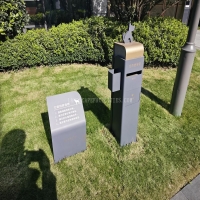Welcome to the website for landscape facilities products and knowledge.
How does the table’s design accommodate the needs of elderly or mobility-impaired users?
Modern table design has evolved significantly to meet the diverse needs of elderly and mobility-impaired users, creating inclusive environments that promote independence and comfort. The fundamental principle behind accessible furniture design lies in understanding the physical challenges faced by these users and implementing thoughtful solutions that address their specific requirements.
One of the most crucial design considerations is height adjustability. Tables with electric or manual height adjustment mechanisms allow users to customize the table surface to their exact needs, whether they're seated in a wheelchair, using a walker, or prefer standing periodically. This flexibility ensures that users can maintain proper posture and reduce strain on their backs and shoulders during extended use.
The implementation of knee clearance spaces represents another vital design element. Tables designed for wheelchair users typically provide a clearance height of at least 27 inches and depth of 19 inches beneath the table surface, allowing comfortable approach and positioning. This space consideration enables users to pull their chairs directly under the table without encountering obstacles, facilitating natural seating positions and easy access.
Edge design and material selection play equally important roles in creating safe table surfaces. Rounded corners significantly reduce injury risks for users with mobility challenges or visual impairments, while non-reflective matte finishes help prevent glare that could cause discomfort for those with vision sensitivity. The selection of durable, warm-to-touch materials that don't conduct cold easily enhances the overall user experience.
Structural stability forms the foundation of safe table design for users with mobility limitations. Tables engineered with wider bases and lower centers of gravity provide essential support for users who may need to lean on the surface for balance or assistance when standing. This stability is particularly crucial for individuals using walking aids or those with conditions affecting their balance.
Additional thoughtful features include integrated support handles, slightly textured surfaces to prevent items from sliding, and cable management systems that keep cords organized and out of the way. These elements collectively create a user-friendly environment that respects the dignity and independence of all users while addressing practical daily needs.
Through these comprehensive design approaches, modern tables transform from mere functional objects into empowering tools that enable elderly and mobility-impaired individuals to participate fully in dining, work, and social activities without barriers or limitations.
Related search:

Recommendation
Outdoor cat and dog feces trash can; Community pet trash can; Metal multi-color design